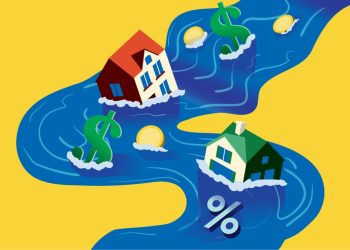Sustained job growth throughout the country and improving credit conditions are forecast to help keep commercial real estate activity expanding into next year, but property prices are likely to slightly cool off after reaching their peak in some major markets, according to the National Association of REALTORS® quarterly commercial real estate forecast.
National office vacancy rates are forecast by Realtors® to decrease 0.8 percent to 14.8 percent over the coming year as continued job creation drives demand. The vacancy rate for industrial space is expected to decline 1.4 percent to 9.7 percent, and retail availability to decrease 1.3 percent to 11.3 percent. With new apartment construction projects coming through the pipeline in several markets, only multifamily vacancies are forecast to increase over the next year, from 6.1 percent to 7.3 percent.
Lawrence Yun, NAR chief economist, says the outlook for the commercial real estate sector continues to look bright despite the multiple headwinds that have held back the economy in recent months. “Temporary turbulence in the financial markets, a stronger U.S. dollar hurting exports and economic weakness overseas chipped away at third quarter growth and led to some deceleration in the pace of commercial investments,” he says. “The good news is that these deterrents are slowly residing, which should ultimately reawaken the growing appetite for commercial space heading into next year.”
According to Yun, increases in lending and investment activity will be driven by steady job creation and slightly easier access to credit. While healthier local labor markets are expected to slowly pull down vacancy rates while pushing rents higher, the modest opening of the credit box is an especially important development for REALTORS®, who are mostly engaged in deals of $1 million or less and have clients that rely heavily on financing from local community banks and credit unions. Although most REALTOR® who practice commercial are still reporting tight lending conditions, an increasing share are saying that credit is becoming slightly easier to obtain.
Regionally, several states in the South and West have outperformed the rest of the country in job growth over the past year. Led by strong demand for apartments from faster household formation and rent growth, metro areas in those states are expected to see elevated levels of new construction, which will lead to a slight uptick in vacancy rates.
“The best days for multifamily housing could be winding down as new construction has already surpassed historical averages,” adds Yun. “This sector has been the industry’s top performer over the past several years as a result of younger households struggling to become homeowners and the demand for apartments far exceeding supply in many markets.”
Even though rising occupancy and rents will continue, property prices are forecast to decline slightly in 2016 as the Federal Reserve starts to raise interest rates. With cap rates already compressed to very low levels, Yun anticipates short-term rate increases in December, and then again in March, which could slightly temper market growth. However, investments are still expected to continue on an upward trend.
“Rising sales and investor optimism in recent years has pushed prices past their peak in many of the larger commercial markets,” says Yun. “Investors – especially those abroad – looking for better yields will likely seek to invest their larger sums of cash in smaller markets and into lower-end properties.”
The latest REALTORS® Commercial Real Estate Market Survey, which measures quarterly activity from NAR’s commercial members, found that similar to residential real estate, the shortage of available inventory remains a concern and is pushing price growth upward. During the third quarter, REALTORS®’ sales volume rose 7.2 percent year-over-year and prices increased 3.8 percent.
For more information, visit www.realtor.org.










